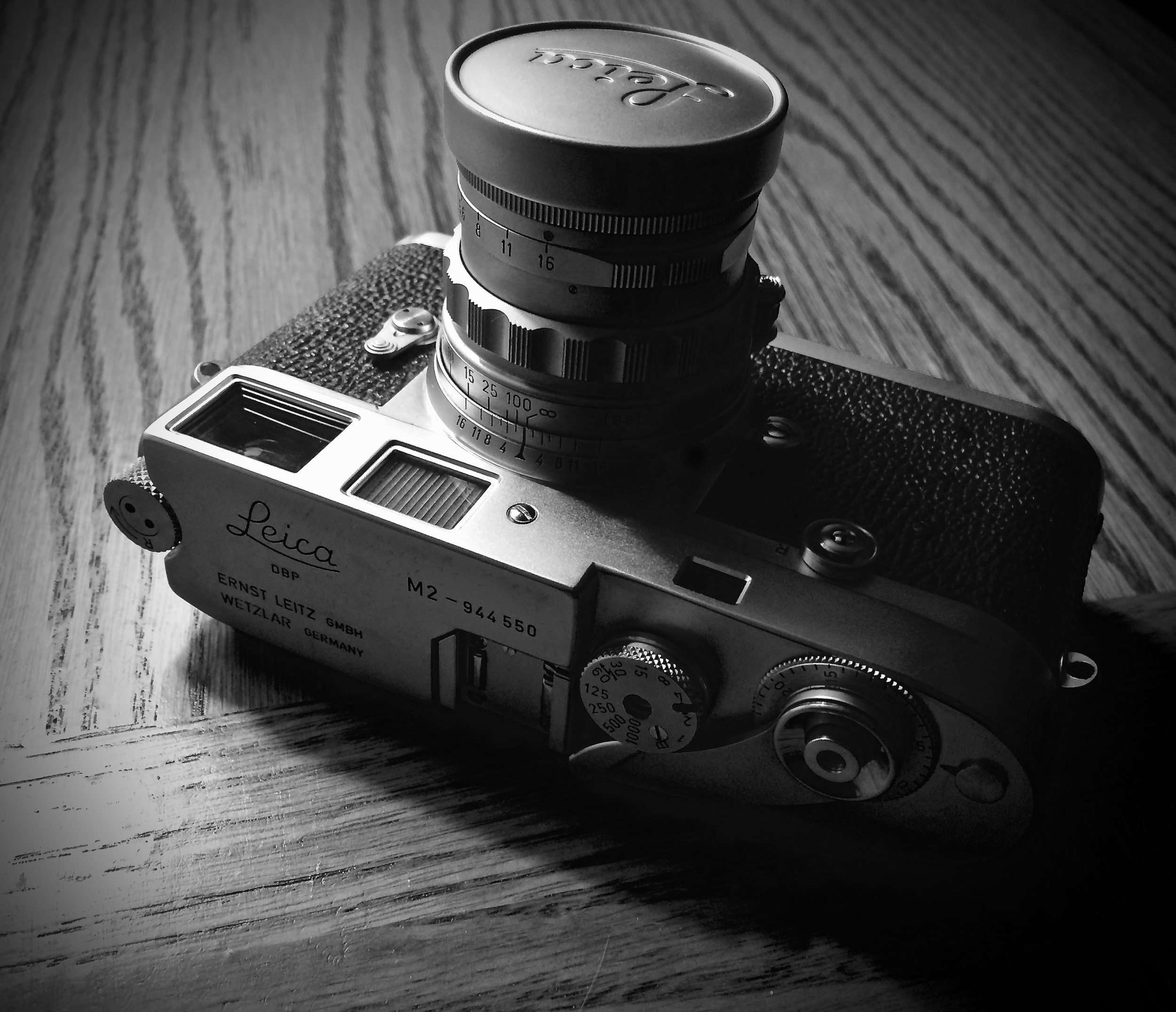Clean, Lubricate & Adjust
For most every user of vintage film cameras, there comes a time when you might consider having your camera serviced, commonly referred to as a Clean-Lube-Adjust or C.L.A. Indeed, the prices of many old film cameras have reached the point where it may be cheaper to just toss one body and replace it with another.
There are circumstances, however, when a CLA makes good sense. Leica screw mount and mechanical M bodies are infinitely serviceable. I just received my M2 back from service by Youxin Ye in New England. My 50-year old M2 now looks and performs almost the same as it did the day it left the factory. Mr. Ye was prompt, communicated well, did great work and his prices were very fair. Leica cameras represent a substantial investment of cash at purchase, so having them serviced is a good idea. Well maintained Leicas typically outlive their owners.
Leica M2 prior to service. Note intact "L" seal indicating the camera has never ben serviced.
I've had several Nikon F2 cameras serviced by Sover Wong in the UK. While the various F2 versions are fairly common on eBay and not terribly expensive, finding a decent one takes some doing. The Nikon F2 was a professional camera and many of them saw hard use and abuse. Once you've found an F2 that looks good and mostly works, sending it off to Sover means you'll have a camera that will perform up to original factory specs and last pretty much forever. Sover is legendary in the F2 world and sending your beloved Nikon off to him is an adventure. He emails photos of his progress during service, shows you what he is doing and why. He is prompt, professional and priced fairly. When your F2 is returned, you'll swear you are holding a brand new camera--he's that good!
Chrome body Nikon F2As. Both the body and the DP-12 finder serviced by Sover Wong.
Most every 1970s era SLR you'll find online or in the trade-in case at your local camera store will at least require new foam seals. I've found Nikon FMs and FEs that looked as good as new on the outside but with light seals that turn to dust upon touching them. Many times, the reflex mirrors in these camera will stick and owners think that their cameras are broken. In reality, the mirror bumper foams have turned to sticky goo and the mirror is simply stuck in the goo. Many local camera shops offer seal replacement services. My local camera shop does it for $30. You can also buy seal kits online for most cameras and do it yourself. It's not hard, but it does require good eyes and patience.
I've written in previous posts about how pleasantly surprised I was when I shot a Canon P rangefinder camera. Before Canon started building SLRs, they released an entire line of Leica copies using screw mount lenses. The P was made in the late 1950s into the early 60s. I really enjoyed using the P and while there was nothing really wrong with mine, I decided to show it some love and send it off for a CLA. Youxin Ye did my P at the same time as my Leica M2. The P came back smoother and quieter. Can't wait to shoot it again.
The Canon that changed my mind about Canons.
When I find an old camera that I enjoy shooting in it's "as-is" state, it doesn't take long before I begin to wonder about how it would feel to shoot that camera with everything working as it was when it left the factory. For the fairly modest investment in good service, I have been rewarded each time by cameras that are even more fun to shoot and that I know I can rely on in the field.
























































































































































